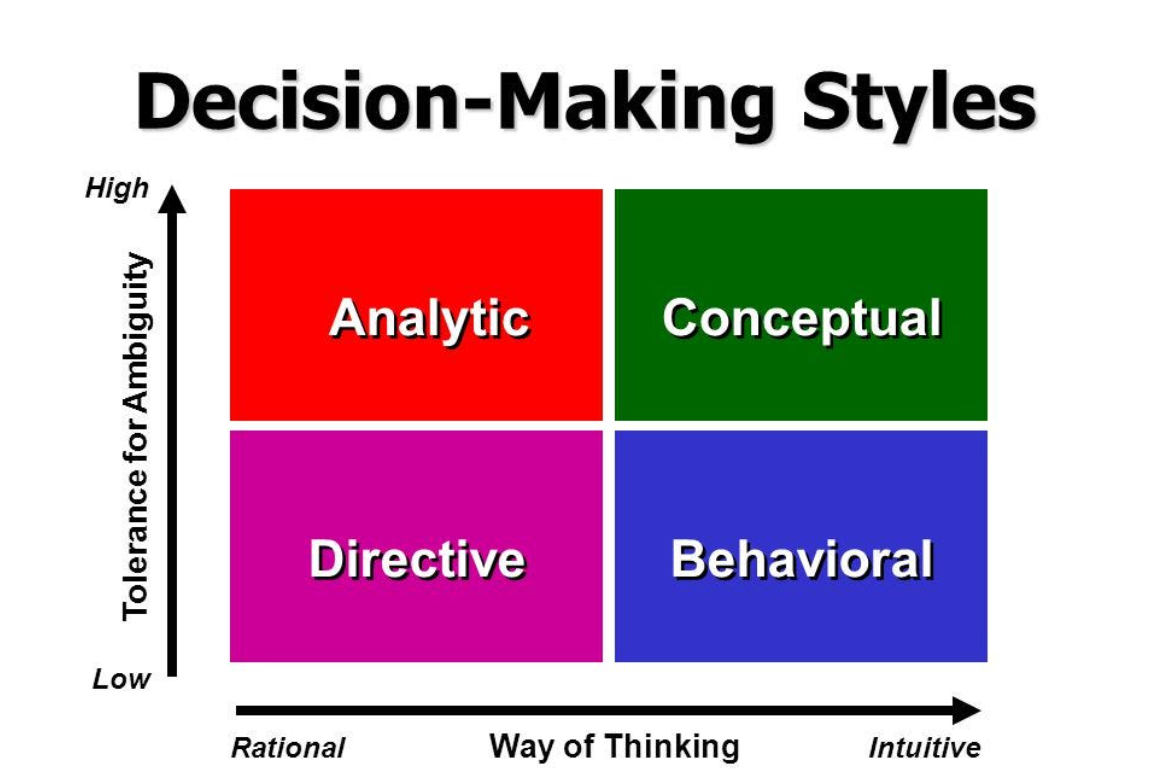🧠 Decision-Making Styles: An Overview
In any organization or personal context, the way individuals make decisions can significantly influence outcomes. Decision-making styles refer to the habitual patterns or approaches that individuals use when faced with choices. These styles are shaped by two key factors:
-
🔄 Tolerance for ambiguity (low vs. high)
-
🧩 Way of thinking (rational/logical vs. intuitive/creative)
Using these dimensions, we get four primary decision-making styles:

1️⃣ Directive Style
-
⚠️ Tolerance for ambiguity: Low
-
🧠 Way of thinking: Rational
🔑 Key characteristics:
-
🎯 Focuses on short-term goals and structured tasks
-
⏱️ Makes quick decisions with minimal information
-
📋 Prefers rules, procedures, and routine
👤 Common among: Managers who value control, efficiency, and low risk
2️⃣ Analytic Style
-
🌊 Tolerance for ambiguity: High
-
🧠 Way of thinking: Rational
🔑 Key characteristics:
-
📊 Gathers and analyzes a large amount of data
-
🧮 Considers multiple alternatives
-
🧠 Logical and data-driven
👤 Common among: Individuals who enjoy solving complex problems methodically
3️⃣ Conceptual Style
-
🌊 Tolerance for ambiguity: High
-
🌈 Way of thinking: Intuitive
🔑 Key characteristics:
-
🌍 Focuses on long-term outcomes and vision
-
💡 Uses creativity and brainstorming
-
🎲 Comfortable with risk and innovation
👤 Common among: Visionaries, strategic thinkers, and creative leaders
4️⃣ Behavioral Style
-
⚠️ Tolerance for ambiguity: Low
-
🌈 Way of thinking: Intuitive
🔑 Key characteristics:
-
🤝 Strong focus on people and relationships
-
🗣️ Seeks team input and values consensus
-
🛑 Avoids conflict and promotes harmony
👤 Common among: Supportive managers and team-focused individuals
✅ Conclusion
Understanding these four decision-making styles—Directive, Analytic, Conceptual, and Behavioral—enables individuals and managers to better understand their own tendencies and adapt their approach as needed. This flexibility improves collaboration, enhances decision quality, and creates stronger, more effective teams.